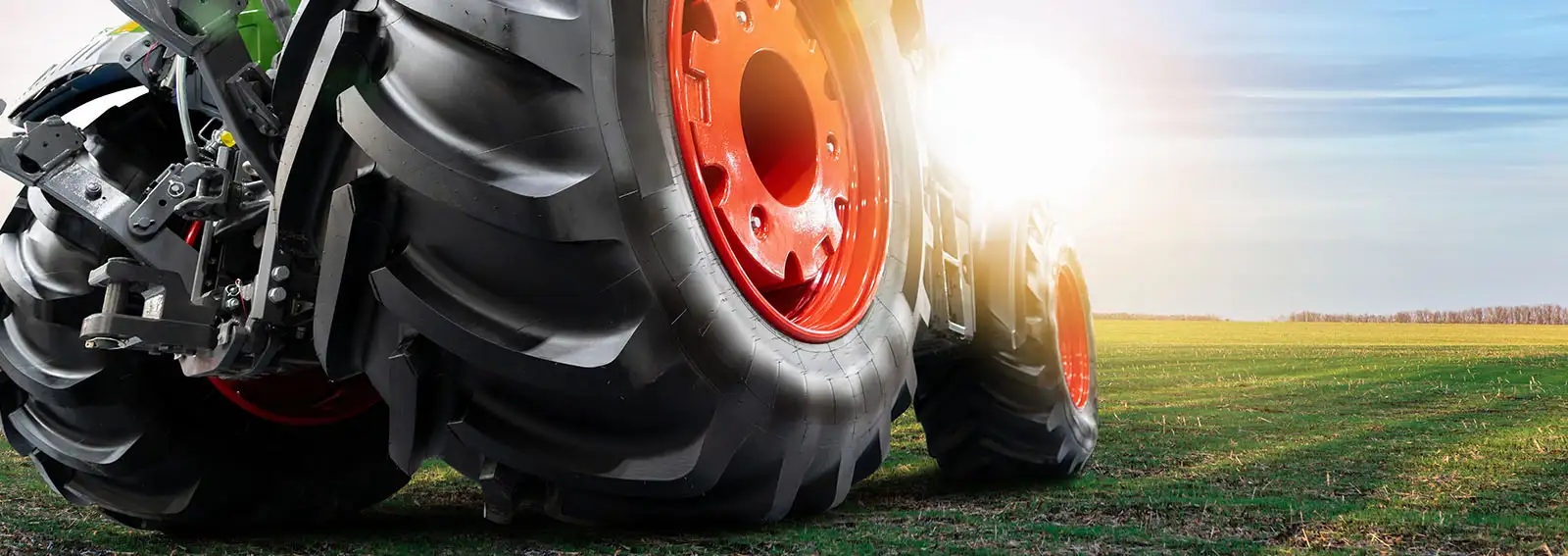One of the most common questions Canadian farmers and agrologists are facing is whether they should lease or purchase capital assets for their farm. If you’ve asked yourself this question, know that the answer will depend largely on your circumstances; there’s no answer that works for everyone. There is, however, a consistent thought process that you can go through regardless of your situation, that will lead you to make the right call.
Ask yourself: Do I really need new/additional equipment?
The first order of business is to consider whether you really need the assets in question, and make sure you’re getting them for the right reasons.
Purchasing equipment solely to reduce income tax is not a strategy we recommend. At the end of each year, look at what you require to run your operation most profitably, and then choose the right tools. Consider leasing or purchasing new equipment if:
- Repair costs are getting out of hand;
- You’re unable to get field work done in time and opportunities are lost;
- Your growth plans mean having more acres to farm; or
- When you benchmark your operation against other similar operations, it shows you don't have enough equipment for your acres.
Once you’ve determined that you need more equipment, it’s time to decide between leasing vs. purchasing. Each of the following should be considered in making that decision.
1. Timing of Tax Deductions
Choosing between leasing and purchasing only changes the timing of deductions, not the overall deduction amount. You can structure your leases with higher payments up front or extended over a longer period to conserve cash. Deductions when purchasing an asset are determined by the Canada Revenue Agency’s rates, which have seen some major (but temporary) changes over the past few years intended to spur capital investment in Canada.
In 2018, the Accelerated Investment Incentive (AII) measures were introduced, allowing for three times the normal tax deduction in the year of acquisition for qualifying purchases. For example, if you acquired a combine with a $1 million purchase price, this means that in the year of purchase, 45 percent ($450,000) is allowable as a deduction for income tax purposes vs. 15 percent ($150,000) under previous rules. The annual tax depreciation rate for the following years will revert to 30 percent. The AII measures are currently in place but will be phased out beginning in 2024.
More recently, the 2021 Federal Budget took these measures further by introducing the Immediate Expensing Incentive (IEI), which allows eligible business operations to expense in the year of purchase up to $1.5 million of the purchase price for qualifying assets purchased and available for use during the year. This incentive is in place until January 1, 2024 — as of January 1, 2022, it’s available to most Canadian proprietorships, partnerships, and corporations. Notable exclusions to this incentive are Class 1, Class 6, and Class 14.1 assets, which include buildings, bins and outbuildings, quota, and goodwill.
Revisiting the combine purchase example from earlier, under the IEI, the full $1 million purchase price would be a deduction for your income tax purposes in the year of purchase.
This chart outlines the timing of the capital cost allowance (CCA) deductions for income tax purposes using the combine scenario:
Lease vs purchase
Purchase price: 1,000,000
CCA rate: 30%
Lease/finance rate: 0%
| Year | Lease 4 yr | Lease 6yr | Purchase (all) | Purchase (IEI) |
|---|---|---|---|---|
| 1 | 250,000 | 167,667 | 450,000 | 1,000,000 |
| 2 | 250,000 | 167,667 | 165,000 | |
| 3 | 250,000 | 167,667 | 115,000 | |
| 4 | 250,000 | 167,667 | 80,850 | |
| 5 | 167,667 | 56,595 | ||
| 6 | 167,667 | 39,617 | ||
| Total ded. | 1,000,000 | 1,000,000 | 907,562 | 1,000,000 |
For the AII (third option above), the remaining $92,438 ($1 million - $907,562) deduction would be taken in future years, but over 90 percent of your tax deduction is obtained in the first six years.
2. Length of Ownership
As mentioned earlier, tax deductions for both leasing and purchasing will be the same over the life of an asset. The only differences will be interest costs and the timing of the deductions, which will impact your farm’s overall tax strategy. Historically, leases could be structured to get 100 percent of the deduction over a shorter period than an asset purchase, but with the introduction of the AII and IEI, this timing difference has been reduced or perhaps even reversed depending on the type of asset being acquired.
Here is an example of a four-year lease term compared to a purchase over the same period using both the AII and IEI options, with the asset being sold at the end of year four. In all three scenarios, the net tax deductions are the same at the end of the four-year timeframe. The only difference is timing of when the deductions are taken.
Asset sold after 4 years
Purchase price: 1,000,000
Value after 4 years: 400,000
CCA rate: 30%
Lease/finance rate: 0%
Lease
| Year | Deductions | Sale | Tax income |
|---|---|---|---|
| 1 | -250,000 | -250,000 | |
| 2 | -250,000 | -250,000 | |
| 3 | -250,000 | -250,000 | |
| 4 | -250,000 | 400,000 | 150,000 |
| Over term | -1,000,000 | 400,000 | -600,000 |
Purchase all
| Year | Deductions | Sale | Tax income |
|---|---|---|---|
| 1 | -450,000 | -450,000 | |
| 2 | -165,000 | -165,000 | |
| 3 | -115,500 | -115,500 | |
| 4 | 400,000 | 130,500 | |
| Over term | -730,500 | 400,000 | -600,000 |
Purchase IEI
| Year | Deduction | Sale | Tax income |
|---|---|---|---|
| 1 | -1,000,000 | -1,000,000 | |
| 2 | |||
| 3 | |||
| 4 | 400,000 | 400,000 | |
| Over term | -1,000,000 | 400,000 | -600,000 |
The purchase options allow for greater tax deductions in the first year, but reduced tax deductions in years two through four which need to be incorporated into your farm’s overall tax strategy, preferably in consultation with your advisor.
3. Cost of Borrowing
Another factor you need to consider is the cost of borrowing. If lease and finance rates are the same, then this factor does not impact your decision. However, watch for registration or application fees that can make rates higher than they may initially appear. Make sure to know the all-in cost of debt for each option.
4. Ownership
For accounting purposes, leases can be treated as operating or capital. Operating leases are simply deducted as an expense, whereas capital leases are set up as assets on the balance sheet with offsetting liabilities (same as a purchase contract). From a security perspective, both types of leases will show that the asset is still owned by the bank, and you do not have title to either one until the option to purchase is exercised at the end of the term.
5. Trade-in values
When assessed over the long term, deductions for any capital asset purchase will come down to its economic usage. However, in some cases, trade-in values can dramatically affect your taxable income; factors such as foreign exchange rates, supply/demand for specific equipment, and political issues, among others, can result in significant variances to taxable income. Since these impacts are beyond your control, it is generally advised that you not factor them in when deciding whether to lease or purchase.
MNP is here to help
While the tax deductions from leasing or purchasing an asset will generally be the same over the life of the asset, the timing of these deductions can have a significant impact on your annual tax liability and related cash flow.
MNP brings the depth of experience you need to help you make the right decisions for your agriculture business. Consult your MNP advisor to assess which option, lease or purchase, works best for your situation.





